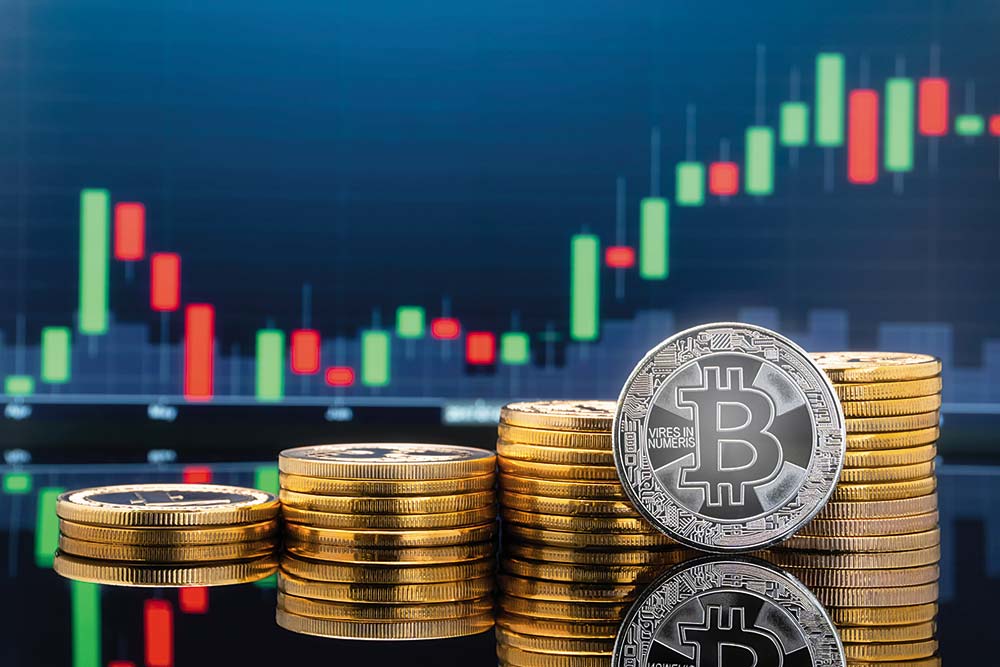The world is witnessing the most unprecedented time affecting every country’s social, political, and economic landscape. The Covid-19 pandemic has brought our world to a long halt. We still do not have clarity on when and how it would recover from this crisis. India has just left the second wave of Covid-19 behind, and if experts are to be believed, another six to eight weeks and the third wave is on its way. Lockdowns are becoming the new norm. The Indian economy is bing battered like never before, further deteriorating the earnings and savings.
Amid the crisis, the rage of cryptocurrencies is gripping the world, including India. These new financial instruments with vicious volatility have generated substantial interest from young, the global rich, and famous. News reports claiming an increase in the significant number of Indian investors in cryptocurrencies baffles me.
Why do people want to enter a cryptic world today except for gambling? Why do people want to spend hard-earned money on a digital currency that fluctuates in value every day, neither has a sovereign guarantee, nor is backed by an institution like the central bank? I have been trying to understand this and other related issues for a while.
Cryptocurrency and Bitcoin are ‘apparently’ invented by a Japanese person named Santoshi Nakamoto. His whereabouts are still unknown. Bitcoin is generated from complex algorithms and calculations that take a massive amount of computing power and an equally massive amount of energy (with a potential negative impact on global warming) through a process known as mining. The value of the bitcoin is floating based on the demand. It was around the $63,000 two months ago, and it is devalued by over 50 per cent now to $29,000. It can only be used at certain places, and only certain banks accept the cryptocurrency.
For actual world use, it needs to be converted to regular (fiat) currency. Each transaction to generate, buy, spend and convert costs money. The space has around 10,000 private coins and companies with a market for a couple of billions of dollars and a market cap of around $2 trillion.
The advantage of cryptocurrency is that it remains relatively confidential without a trail followed by banking regulations. It leaves no trail and has no borders. It is universal and can be converted to various fiat currencies through agents. As a result, several global drug lords, black markets, criminals, and cyber hackers use cryptocurrency more frequently.
Crypto is a game for the rich, famous, and HNIs with an appetite for significant risks and associated rewards and can afford to gamble. In general, most rich people support the privatisation of money because they believe that the decentralisation of financial systems will create more opportunities for businesses.
However, the world’s central banks are overseeing cryptocurrency developments. Recently, China’s central bank ordered big national banks and payment processors to curb trading and other services related to cryptocurrency actively. Still, China is a big user of crypto for various activities. This created negative sentiment globally, and the crypto market went in free fall.
Many young Indians idealise billionaires’ personalities and super financial success like Tesla’s Elon Musk, Amazon’s Jeff Bezos and so on. Since some of the rich role models support the idea of cryptocurrencies, it does not make sense for the Indian youth to follow.
However, being a technocrat myself with some understanding of mobile wallet, digital payments, online shopping, fintech, crypto, blockchains, etc, I appreciate the intricacies and complexities of cryptocurrencies.
I must warn the young not to gamble hard-earned money at this stage. For a commoner, it is better to wait and watch. If you earn through a regular paycheque, have a family to support, and pay taxes, you should not play casino with crypto. Young people must understand that every digital transaction has associated costs for the consumer. As opposed to that, the government-issued currency does not cost anything to spend. It also has stability, confidence, insurance, and backing by the government. This is the crucial difference that needs to be understood by all young people.
Earlier in June, US investigators recovered about $3 million paid in cryptocurrencies to hackers known as DarkSide as ransom by a critical East Coast pipeline company in May. The US company’s CEO Joseph Blount told The Wall Street Journal that the company paid $4.4 million in ransom demand because their business operation was threatened, affecting their customer service. It was strictly a business decision.
There are hundreds of such cases reported and investigated where hackers demand payment only in cryptocurrencies. At the same time, hackers also steal money from crypto wallets that are impossible to recover. Reporting to police or financial authority does not get anywhere due to the cost associated with tracking and recovery.
The Reserve Bank of India (RBI) fears are entirely valid and justified in a complex financial system like India, where things can spiral and worsen. The government’s approach to wait and watch how the cryptocurrency ecosystem unfolds worldwide is correct but will put more Indians and more money at risk.
All major central banks will introduce a digital currency to improve features and functionalities needed to offer flexibility, convenience, speed, and security for various financial transactions.
I certainly support for the time being the idea of digital currency if it comes from the central banks with proper regulations to manage and monitor transactions.
The author is an inventor and entrepreneur, popularly known as the Father of India’s Computer and IT Revolution

